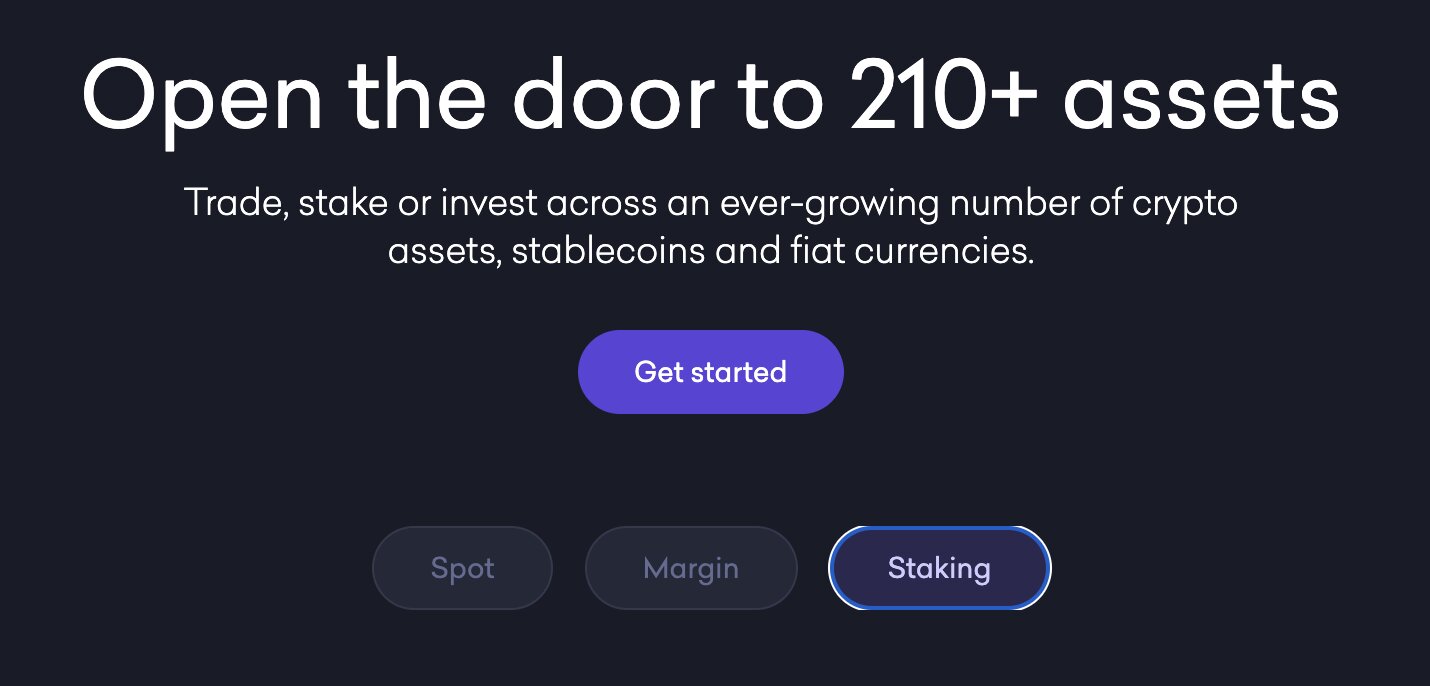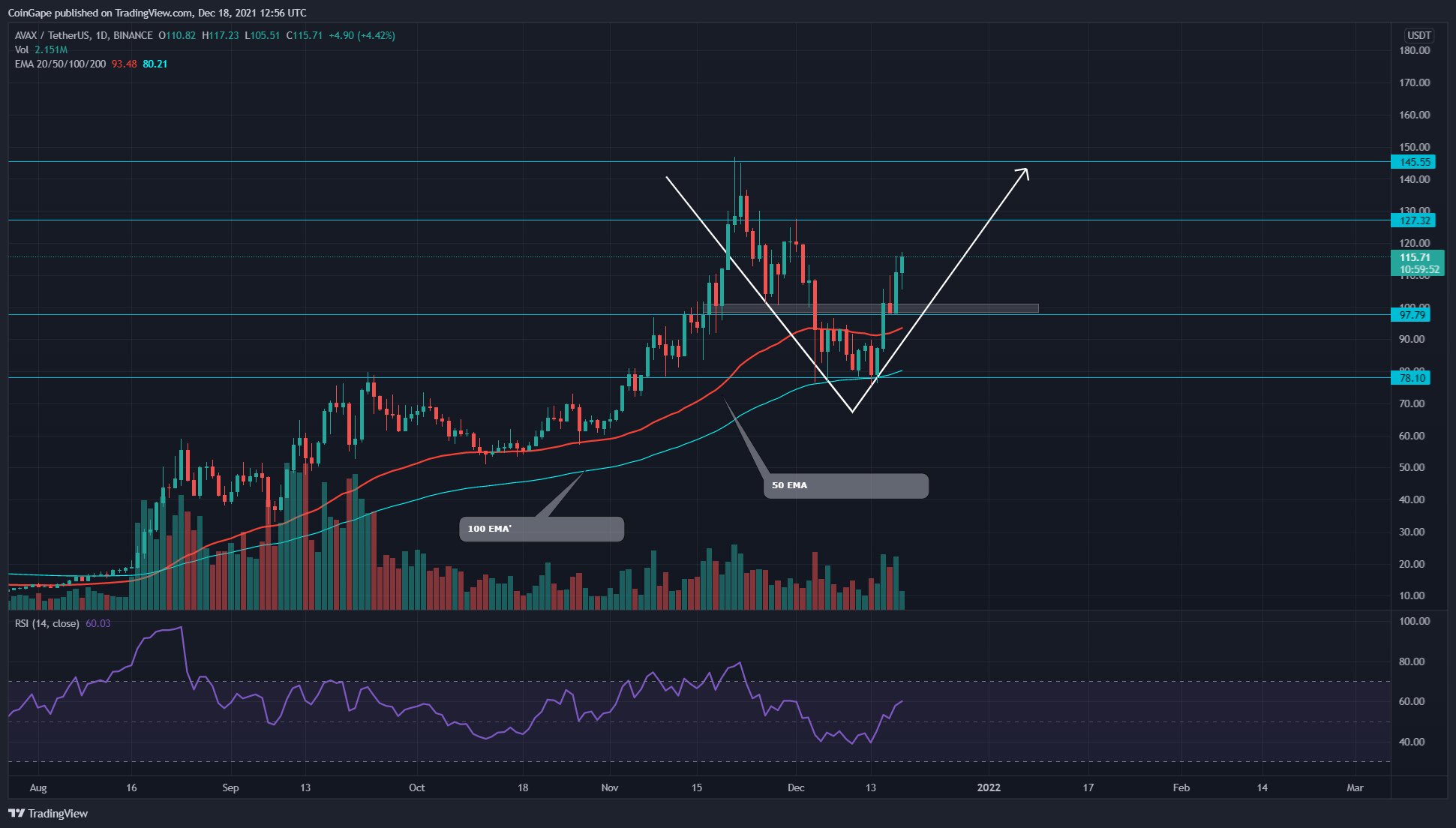Introduction
Welcome to the world of staking crypto, a concept that has gained significant attention in the world of cryptocurrency investing. If you’re new to the crypto space, you may be wondering what staking is all about and why it has become such a popular strategy. In this article, we’ll delve into the world of staking, exploring its benefits, risks, and how to get started.
Staking has emerged as an alternative to traditional mining in the cryptocurrency ecosystem. While mining involves solving complex mathematical puzzles to validate transactions and secure the network, staking allows users to participate in the network’s consensus mechanism by holding and “staking” their cryptocurrency. By doing so, these users contribute to the network’s security while earning rewards in the process.
The concept of staking is closely tied to the concept of proof-of-stake (PoS) consensus algorithms, which have gained traction as an energy-efficient and more scalable alternative to proof-of-work (PoW) algorithms. PoS algorithms select validators to create new blocks and verify transactions based on the number of coins they hold and are willing to “stake” as collateral.
Staking offers several benefits to cryptocurrency holders. One of the key advantages is the potential to earn passive income. By staking your coins, you have the opportunity to earn additional tokens as rewards for participating in the network. This can be especially appealing in a low-interest-rate environment where traditional investment vehicles may not offer attractive returns.
Another benefit of staking is the ability to actively participate in the network’s governance. Some PoS networks allow token holders to have a say in protocol upgrades, voting on proposals, and shaping the future direction of the project. This gives stakers a sense of ownership and involvement, fostering a stronger community and decentralization.
Staking is not without its risks and considerations. One of the main risks is the potential for a token’s value to decrease. When staking, you are essentially locking up your tokens for a specific period, and if the market takes a downturn, the value of your staked tokens will also decrease. Additionally, there is always the possibility of technical vulnerabilities or attacks on the network, which could result in the loss of your staked coins.
Despite the risks, staking has gained significant popularity, and many cryptocurrencies now support staking as a core feature. Some of the most popular staking coins include Ethereum (ETH), Cardano (ADA), Polkadot (DOT), and Tezos (XTZ), among others. Each of these coins has its own staking model and rewards structure, offering different opportunities for those interested in staking.
If you’re ready to dive into the world of staking, the next section will guide you through the process of getting started. Keep reading to learn more about how to stake your crypto and potentially earn rewards in the process.
What is Staking?
Staking is a process by which cryptocurrency holders participate in the consensus mechanism of a proof-of-stake (PoS) network. Instead of relying on mining, which requires powerful hardware and substantial energy consumption, staking allows users to validate and secure transactions by holding and “staking” their cryptocurrency.
When you stake your crypto, you essentially lock up a certain amount of your tokens as collateral to support the network’s operations. In return for staking, you have the opportunity to earn rewards in the form of additional tokens. The more coins you stake, the higher the chances of being chosen as a validator and earning rewards.
Staking relies on the principle of coin age, which takes into account both the quantity of coins being staked and the length of time they have been staked. This approach encourages participants to hold their coins for an extended period, as the longer the coins are staked, the greater the chances of earning rewards. The concept of coin age also helps protect the network from potential malicious actors, as they would need to acquire a significant number of coins and stake them for a considerable time to have any influence.
Staking serves two main purposes within a PoS network. First, it ensures the security and stability of the network by incentivizing participants to act honestly and follow the consensus rules. Validators are responsible for verifying and validating transactions, adding them to the blockchain, and ensuring its integrity. By staking their coins, validators have a financial stake in the network’s success, making it less likely for them to engage in malicious activities.
The second purpose of staking is to decentralize the network’s governance. In many PoS networks, stakers have the ability to participate in the decision-making process by voting on proposals and protocol upgrades. This allows the community to have a say in the network’s future direction and prevents concentrated power in the hands of a few stakeholders.
To participate in staking, you need to choose a cryptocurrency that supports staking and have a wallet that is compatible with the network’s staking mechanisms. Each cryptocurrency has its own staking requirements and rewards structure, so it’s essential to do your research and understand the specifics of each network.
Staking has become increasingly popular for cryptocurrency holders looking to generate passive income and actively contribute to the networks they support. By staking your crypto, you not only have the opportunity to earn rewards but also play a crucial role in the security and governance of the network. So, if you have some crypto sitting idle in your wallet, consider staking it and becoming an active participant in the crypto ecosystem.
How Does Staking Work?
Staking involves a series of steps and processes that allow cryptocurrency holders to participate in the network’s consensus mechanism and earn rewards. Understanding how staking works is crucial to effectively engage in this process and maximize your staking rewards.
Here are the key elements of how staking works:
1. Choosing a Staking-Capable Cryptocurrency: The first step in staking is selecting a cryptocurrency that supports staking. Not all cryptocurrencies offer staking features, so it’s important to research and choose a coin that aligns with your investment goals.
2. Setting up a Staking Wallet: Once you have chosen a staking-capable cryptocurrency, you need to set up a compatible staking wallet. This wallet can be software-based or hardware-based, depending on your preference and the requirements of the specific cryptocurrency. It’s crucial to choose a secure and reputable wallet to protect your staked assets.
3. Obtaining the Staking Tokens: Before you can start staking, you need to acquire the tokens of the cryptocurrency you have chosen. This typically involves purchasing the tokens from an exchange and transferring them to your staking wallet.
4. Understanding the Staking Model: Each staking-capable cryptocurrency has its own staking model and reward structure. It’s important to familiarize yourself with the specific rules and requirements of the network you intend to stake on. This includes knowing the minimum staking requirement, the duration of the staking period, and the potential rewards you can earn.
5. Locking and Staking the Tokens: Once you have the staking tokens in your wallet, you will need to lock them up for a specific period. This period can range from a few days to several months, depending on the cryptocurrency. When you lock up your tokens, they become collateral, ensuring your commitment to the network’s security and consensus mechanisms.
6. Participating as a Validator: By staking your tokens, you become eligible to participate in the network’s consensus mechanism as a validator. Validators are responsible for verifying transactions and adding them to the blockchain. The selection process for validators varies between cryptocurrencies and can be based on factors such as the amount of tokens staked and the duration of the staking period.
7. Earning Staking Rewards: As a validator, you have the opportunity to earn staking rewards. These rewards are typically in the form of additional tokens of the network you are staking on. The amount of rewards you can earn depends on the network’s specific reward structure, such as the inflation rate or transaction fees allocated to stakers.
8. Monitoring and Managing Staking: Staking requires active monitoring and management of your staked assets. This includes keeping your staking wallet secure, staying up to date with changes in the network’s staking requirements, and managing the rewards earned from staking.
Overall, staking offers a unique opportunity for cryptocurrency holders to contribute to the security and governance of a network while earning rewards. By understanding the process of staking and carefully selecting the right cryptocurrency, wallet, and staking strategy, you can make the most out of your staked assets and actively participate in the exciting world of staking crypto.
Benefits of Staking Crypto
Staking crypto offers several compelling advantages for cryptocurrency holders who are looking for alternative methods to grow their investments. Here are some key benefits of staking:
1. Passive Income Generation: Staking allows you to earn passive income by staking your crypto tokens. Instead of leaving your tokens idle in a wallet, they can be put to work by participating in the network’s staking process. By staking your tokens, you have the opportunity to earn additional tokens as rewards, providing a potential source of regular income.
2. Environmental Friendliness: Staking is considered to be more energy-efficient and environmentally friendly compared to traditional mining. Proof-of-stake (PoS) algorithms, which power staking, use significantly less energy as they don’t rely on complex calculations and powerful hardware setups. By choosing staking over mining, you can contribute to a greener and more sustainable cryptocurrency ecosystem.
3. Network Security and Stability: Staking plays a crucial role in maintaining the security and stability of a blockchain network. When you stake your tokens, you become a validator, participating in the network’s consensus mechanism and helping to verify and validate transactions. Validators have a financial stake in the network’s success, which incentivizes them to act honestly and follow the rules, making it difficult for malicious actors to compromise the network.
4. Network Governance Participation: Some staking networks allow token holders to participate in the governance of the network. By staking your tokens, you gain voting rights and the ability to make decisions regarding protocol upgrades, network parameters, and other important matters. This gives you a voice in shaping the future of the network and fosters a strong sense of community and decentralization.
5. Long-Term Investment Strategy: Staking can serve as a long-term investment strategy. By staking your tokens and holding them for an extended period, you can potentially benefit from the appreciation of the underlying cryptocurrency. Staking encourages participants to hold their tokens, as the longer they are staked, the higher the chances of earning rewards. This aligns with a “buy and hold” investment approach that can be beneficial when investing in cryptocurrencies.
6. Diversification of Crypto Portfolio: Staking allows you to diversify your cryptocurrency portfolio by expanding beyond traditional holdings. By staking different cryptocurrencies, you can spread your investment across various networks and potentially benefit from different staking rewards and opportunities. This diversification can help mitigate risk and enhance the overall stability of your crypto portfolio.
7. Potential for Higher Returns: Staking has the potential to provide higher returns compared to traditional investment vehicles. With interest rates around the world at historic lows, staking offers an attractive option to earn inflation-beating returns. The rewards earned from staking, combined with potential capital appreciation of the staked tokens, can lead to significant growth in your crypto portfolio over time.
Overall, staking crypto presents a range of benefits, including passive income generation, environmental friendliness, active network participation, long-term investment potential, portfolio diversification, and potential for higher returns. By leveraging these advantages, staking offers a compelling option for cryptocurrency holders to enhance their investment strategies and actively engage in the crypto space.
Different Types of Staking
Staking has evolved over time, and different types of staking have emerged to cater to the unique characteristics and requirements of various cryptocurrencies. Here are some of the common types of staking in the crypto space:
1. Online Staking: Online staking is the most common and straightforward type of staking. It involves deploying your staking tokens on an online staking platform or a staking wallet provided by the cryptocurrency project. The staking process is managed by the platform, which handles all the technical aspects, such as block validation and reward distribution. Online staking is typically user-friendly and accessible to beginners.
2. Cold Staking: Cold staking, also known as offline staking, involves staking your tokens in a secure wallet that is not connected to the internet. This method provides an extra layer of security as it reduces the risk of hacking or online theft. While cold staking offers enhanced security, it often requires more technical expertise to set up and manage compared to online staking.
3. Delegated Staking: Delegated staking allows participants to delegate their staking rights to a trusted third party, typically referred to as a delegate or validator. Instead of staking and managing their own tokens, participants delegate their tokens to a validator, who takes on the responsibility of validating transactions and securing the network. Delegated staking is commonly used in blockchain networks that implement a delegated proof-of-stake (DPoS) consensus mechanism.
4. Layered Staking: Layered staking involves staking tokens across multiple layers or tiers within a blockchain ecosystem. This approach allows participants to benefit from staking rewards on multiple levels and take advantage of various features and functionalities offered by different layers. Layered staking can enhance the diversification of rewards and provide additional earning potential for participants.
5. Hybrid Staking: Hybrid staking refers to a combination of staking and other consensus mechanisms, such as proof-of-work (PoW) or proof-of-authority (PoA). In a hybrid staking model, a certain portion of the blockchain’s network participants engage in staking, while others contribute to the network’s security through mining or other consensus methods. Hybrid staking aims to strike a balance between decentralization, security, and scalability.
6. Staking Pools: Staking pools enable multiple participants to combine their stake and increase their chances of earning rewards. In a staking pool, participants pool their tokens together, and the pool acts as a single entity, staking the combined tokens and distributing the rewards among pool members. Staking pools are particularly useful for participants with a lower stake, as it allows them to have a more consistent and frequent reward flow.
7. Validator Auctions: Validator auctions are a unique form of staking where participants compete for the opportunity to become validators. Instead of simply staking tokens and being selected randomly or based on their stake, participants bid or compete for the right to validate transactions and secure the network. Validator auctions introduce an element of competition, potentially ensuring that only the most committed and capable participants become validators.
Each type of staking has its own advantages and characteristics, catering to different preferences and requirements of cryptocurrency holders. Understanding the various staking options available can help you choose the most suitable method for your staking endeavors.
Risks and Considerations of Staking
While staking crypto offers numerous benefits, it is essential to be aware of the risks and considerations involved. Here are some key factors to consider before engaging in staking:
1. Volatility and Market Risk: The cryptocurrency market is known for its high volatility. When staking your tokens, there is a risk that the value of the staked cryptocurrency may decrease. It’s important to be prepared for market fluctuations and consider your risk tolerance before committing your tokens to staking.
2. Lockup Period: Staking usually involves a lockup period during which your tokens are unavailable for trading or selling. This lockup period can range from a few days to several months, depending on the specific cryptocurrency network. If you need immediate access to your tokens, staking may not be the right option for you.
3. Network Risks: Staking exposes you to potential risks related to the underlying network. Technological vulnerabilities, bugs, or attacks on the network can result in the loss or compromise of your staked tokens. It is crucial to research the security measures and track record of the network before engaging in staking.
4. Regulatory and Legal Considerations: The regulatory landscape surrounding cryptocurrencies and staking is evolving. Depending on your jurisdiction, there may be legal and tax implications associated with staking. It is important to understand and comply with the regulations applicable to your activities to avoid any legal repercussions.
5. Operational Risks: Staking involves interacting with software wallets, staking platforms, or smart contracts. It is important to ensure that you are using trustworthy and secure platforms to minimize the risk of hacking or theft. Regularly updating your software and following best practices for security can help mitigate operational risks.
6. Centralization Risks: Some staking networks may exhibit centralization tendencies, where a small number of stakeholders hold a significant portion of the staked tokens. This concentration of power can potentially impact the decentralization and security of the network. Carefully researching and selecting a staking network that promotes decentralization can help mitigate centralization risks.
7. Opportunity Cost: By staking your tokens and locking them up for a specific period, you may be missing out on potential opportunities in the broader cryptocurrency market. While staking can generate passive income, the returns may vary depending on the market conditions. It’s important to weigh the potential rewards of staking against other investment options and evaluate the opportunity cost of locking up your tokens.
Understanding and carefully considering these risks and considerations is essential before engaging in staking. By being informed and proactive, you can mitigate some of the risks and make informed decisions about your staking activities.
Popular Staking Coins
The world of cryptocurrencies offers a wide range of options for staking. Here are some of the popular staking coins that have gained significant attention and support:
1. Ethereum (ETH): Ethereum, the second-largest cryptocurrency by market capitalization, is in the process of transitioning from a proof-of-work (PoW) to a proof-of-stake (PoS) consensus mechanism. The launch of Ethereum 2.0 aims to introduce staking capabilities, allowing ETH holders to stake their tokens and earn rewards for securing the network.
2. Cardano (ADA): Cardano is a blockchain platform that uses a PoS consensus mechanism. ADA holders can participate in staking by delegating their tokens to specific pools, which increases the chances of earning rewards. Cardano’s staking model is designed to enhance decentralization and allow token holders to actively engage in network governance.
3. Polkadot (DOT): Polkadot is a multi-chain blockchain platform that utilizes a PoS consensus mechanism. DOT holders can participate in staking by bonding their tokens, which increases their chances of being selected as validators and earning rewards. Polkadot’s unique design allows for interoperability between different blockchains, fostering a more connected and scalable ecosystem.
4. Tezos (XTZ): Tezos is a self-amending blockchain platform that uses a PoS consensus mechanism. XTZ holders can participate in staking by delegating their tokens to bakers, who represent validators on the Tezos network. By staking XTZ, participants can earn rewards and get involved in the governance process by voting on proposed protocol upgrades.
5. Binance Coin (BNB): Binance Coin, the native cryptocurrency of the Binance exchange, offers a staking feature called “Flexible Savings.” BNB holders can choose to lock up their tokens for a specific period and earn staking rewards. This provides BNB holders with an opportunity to grow their holdings while actively supporting the Binance ecosystem.
6. Cosmos (ATOM): Cosmos is a decentralized network of independent blockchains that uses a PoS consensus mechanism. ATOM holders can participate in staking by delegating their tokens to validators and earn rewards for securing the network. Cosmos aims to facilitate interoperability between different blockchains, enabling seamless communication and value transfer.
7. VeChain (VET): VeChain is a blockchain platform that focuses on supply chain management and product authentication. VET holders can participate in staking by converting their tokens into VeChainThor (VTHO) tokens, which are used for transactions and computational operations on the VeChain network. Staking VET rewards token holders with VTHO.
These are just a few examples of the many staking coins available in the crypto market. Each staking coin brings its unique features, rewards structure, and staking mechanisms. Before staking any cryptocurrency, it is important to conduct thorough research and evaluate the specific requirements and potential rewards of each project.
How to Start Staking
If you’re interested in staking your crypto and earning rewards, here are the general steps to get started:
1. Choose a Staking-Capable Cryptocurrency: Select a cryptocurrency that supports staking. Research different projects, their staking models, and the potential rewards they offer. Consider factors such as the project’s credibility, community support, and the long-term viability of the network.
2. Set up a Staking Wallet: Obtain a secure wallet that is compatible with the staking capabilities of your chosen cryptocurrency. Some cryptocurrencies have their own official wallets, while others may require you to use third-party wallets that support staking. Ensure that you follow best practices for wallet security and backup your wallet’s recovery seed.
3. Obtain the Staking Tokens: Acquire the tokens of the cryptocurrency you have selected for staking. You can usually purchase these tokens from reputable cryptocurrency exchanges. Once you have obtained the tokens, transfer them to your staking wallet.
4. Understand the Staking Requirements: Familiarize yourself with the staking requirements of the chosen cryptocurrency. This includes knowing the minimum staking amount, the lock-up period, and any additional criteria specific to the network. Some networks require a minimum stake, while others allow you to stake any amount of tokens you hold.
5. Stake Your Tokens: Follow the instructions provided by your staking wallet to stake your tokens. This typically involves selecting the “Stake” or “Delegate” option, entering the desired amount of tokens you want to stake, and confirming the transaction. Ensure that you carefully review the transaction details to avoid any mistakes.
6. Monitor Your Staking: Keep track of your staked tokens and monitor your staking activity regularly. Some wallets may provide you with real-time data on your staking rewards, giving you a clear view of your earnings. Stay informed about any changes in the staking requirements or rewards structure of the network you are staking on.
7. Withdraw Rewards: Depending on the specific cryptocurrency network, you may be able to periodically withdraw or claim your staking rewards. Follow the instructions provided by your staking wallet or the network to withdraw your rewards. Some networks may have specific minimum thresholds or withdrawal periods for rewards.
8. Stay Informed: Continuously educate yourself about staking and the crypto project you are participating in. Stay updated on news, network upgrades, and changes that may impact your staking experience. Engage with the project’s community through forums, social media, or official channels to gather insights and stay connected.
Remember that staking involves risks, and rewards can vary based on the cryptocurrency market conditions and the specific network’s dynamics. It’s essential to do thorough research, assess your risk tolerance, and only stake what you are comfortable with. By following these steps and staying informed, you can begin your staking journey and potentially earn rewards while contributing to the security and governance of the blockchain network you choose.
Staking vs Mining: What’s the Difference?
When it comes to earning rewards and contributing to blockchain networks, two popular methods are staking and mining. While both methods involve participation in the network’s consensus mechanism, they have significant differences. Here’s a breakdown of staking and mining and the key distinctions between the two:
Staking:
Staking is a process that involves holding and “staking” a specific cryptocurrency to support the network’s operations and validate transactions. Here are some key characteristics of staking:
- Consensus Mechanism: Staking revolves around proof-of-stake (PoS) consensus mechanisms, where validators are chosen based on the number of tokens they hold and are willing to stake as collateral.
- Participation: Cryptocurrency holders participate in staking by locking up their tokens for a specific period. By doing so, they increase their chances of being selected as validators and earning rewards.
- Rewards: Stakers earn rewards in the form of additional tokens for participating in the network’s consensus. The rewards are typically proportional to the amount of tokens staked and the duration of the staking period.
- Energy Efficiency: Staking is considered more energy-efficient compared to traditional mining, as it doesn’t require powerful hardware and extensive computational calculations.
- Security and Governance: Stakers help secure the network by ensuring the validity of transactions and participating in the consensus mechanism. They may also have the opportunity to participate in the governance process and influence the network’s future direction.
Mining:
Mining, on the other hand, involves solving complex mathematical puzzles and verifying transactions to add them to the blockchain. Here are key characteristics of mining:
- Consensus Mechanism: Mining is primarily associated with proof-of-work (PoW) consensus mechanisms, where miners compete to solve intricate mathematical problems to validate and add new blocks to the blockchain.
- Processing Power: Miners require powerful hardware and substantial computational resources to compete in solving the complex puzzles. The highest computational power typically has a higher chance of completing the calculations first and earning block rewards.
- Rewards: Miners are rewarded with a share of newly minted tokens and transaction fees for successfully solving the puzzles and adding blocks to the blockchain.
- Energy Intensive: Mining can be energy-intensive due to the significant computational power required. High energy consumption has led to environmental concerns and the search for more energy-efficient alternatives like staking.
- Network Security: Miners play a crucial role in securing the network by ensuring the validity of transactions and maintaining the integrity of the blockchain through their computational efforts.
In summary, the main difference between staking and mining lies in the consensus mechanisms and the computational requirements. Staking is based on holding and staking tokens to secure the network and earn rewards in a more energy-efficient manner, while mining involves solving complex mathematical problems through powerful hardware to secure the network and earn rewards. Each method has its own advantages and considerations, and the choice between staking and mining depends on various factors such as the specific cryptocurrency, network goals, energy efficiency concerns, and personal preferences.
Conclusion
Staking has become an increasingly popular strategy for cryptocurrency holders to earn passive income, actively contribute to network security and governance, and diversify their crypto portfolios. By participating in staking, individuals can lock up their tokens, support the network’s operations, and earn rewards in return.
Throughout this article, we have explored the concept of staking, discussed its benefits, and highlighted the different types of staking available. We also delved into the risks and considerations associated with staking, emphasizing the importance of thorough research and risk management.
Staking offers several advantages such as passive income generation, environmental friendliness, network security, governance participation, long-term investment potential, portfolio diversification, and the potential for higher returns. However, it is essential to consider the risks involved, including market volatility, network risks, legal and regulatory considerations, and potential opportunity costs.
Furthermore, we compared staking with mining, highlighting the key differences between the two methods of earning rewards and contributing to blockchain networks. Staking relies on proof-of-stake (PoS) mechanisms, whereas mining is associated with proof-of-work (PoW) consensus. Both have unique characteristics and considerations, and the choice between them depends on individual preferences and circumstances.
To start staking, it is crucial to choose a staking-capable cryptocurrency, set up a compatible staking wallet, acquire the staking tokens, understand the staking requirements, stake the tokens, monitor and manage the staking process, and stay informed about the network and market developments.
In conclusion, staking crypto provides an opportunity for cryptocurrency holders to participate in network consensus, earn rewards, and actively contribute to the ecosystem. It is an evolving landscape with diverse options and considerations. By conducting thorough research, managing risks, and staying informed, individuals can embark on their staking journey and potentially benefit from the rewards and opportunities that staking offers in the crypto space.

























